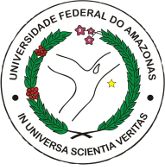Please use this identifier to cite or link to this item:
https://edoc.ufam.edu.br/handle/123456789/9884Full metadata record
| DC Field | Value | Language |
|---|---|---|
| dc.contributor.author | Cruz Matias, Angélica Chrystina | - |
| dc.date.accessioned | 2025-04-14T17:32:32Z | - |
| dc.date.available | 2025-04-14T17:32:32Z | - |
| dc.date.issued | 2024-07-04 | - |
| dc.identifier.uri | https://edoc.ufam.edu.br/handle/123456789/9884 | - |
| dc.description | Dissertação de mestrado | pt_BR |
| dc.description.abstract | As ações antropogênicas vêm causando inúmeros prejuízos ao ecossistema. Indústria, agricultura, aterros sanitários, mineração e produção de resíduos químicos e biológicos em ambientes aquáticos são estudadas para identificar o impacto causado e como isso afeta o meio ambiente e a saúde humana. Para identificar a geoquímica das águas superficiais foi necessário analisar como os lagos são afetados pelas atividades humanas e pelos processos naturais. As características hidroquímicas que podem ser usadas para avaliar a relação entre intemperismo das rochas e fontes artificiais. As lagoas azuis e cachoeiras da região de estudo foram utilizadas como objeto de pesquisa, para explorar as características físico-químicas e bacteriológicas, para avaliar a qualidade dessas águas dentro dos parâmetros da balneabilidade, conforme legislação do CONAMA 357/2005 e 274/2000. Os procedimentos de amostragem e análise seguiram o manual ISSN 1980-3958/2011 (PARRON et al., 2011) e APHA (2017). As amostragens foram realizadas respeitando o ciclo hidrológico do município de Presidente Figueiredo-AM, divididos em 4 campanhas entre 2021 e 2023. As análises realizadas foram: E. coli., pH, condutividade, oxigênio dissolvido, turbidez, STS, alcalinidade, cátions (Na+, K+, Ca2+, Mg2+ e NH4+) e ânions (Cl-, NO3-, SO42-e PO43-) e metais potencialmente tóxicos (Fe, Al, Mn, Zn, Ba, Ag, Pb, Cd, Cr, Ni e Cu). Os resultados identificaram que as águas analisadas estão em conformidade com as legislações do CONAMA 357 e 274 para balneabilidade. As medições estão em conformidade com as normas estabelecidas pelo CONAMA 357/2005 e 274/2000, que regulam a qualidade da água superficial para uso recreativo de contato primário. Dos pontos amostrais, a Lagoa LG apresentou menor influência antrópica, com valores de pH e CE alinhados com as características da região. Na e K foram os principais constituintes da fase dissolvida, preservando características naturais. Por outro lado, a Cachoeira CL mostrou maior presença de íons, CF e pH próximo à neutralidade, evidenciando maior impacto humano. Os metais Fe, Al, Mn, Zn e Ba apresentaram concentrações baixas, refletindo as condições de intemperismo das regiões tropicais úmidas. No entanto, a continuidade dos estudos e o monitoramento constante dos ecossistemas aquáticos são fundamentais para garantir a manutenção dessa conformidade ao longo do tempo | pt_BR |
| dc.description.sponsorship | Anthropogenic activities have been causing numerous damages to ecosystems. Industries, agriculture, landfills, mining, and the production of chemical and biological waste in aquatic environments are studied to identify the impact and how it affects the environment and human health. To identify the geochemistry of surface waters, it was necessary to analyze how lakes are affected by human activities and natural processes. The hydrochemical characteristics can be used to evaluate the relationship between rock weathering and artificial sources. The blue lagoons and waterfalls in the study region were used as research subjects to explore the physicochemical and bacteriological characteristics and assess the quality of these waters within the bathing standards, according to the legislation of CONAMA 357/2005 and 274/2000.The sampling and analysis procedures followed the manual ISSN 1980-3958/2011 (PARRONet al., 2011) and APHA (2017). The samplings were conducted respecting the hydrological cycle of the municipality of Presidente Figueiredo-AM, divided into four campaigns between 2021 and 2023. The analyses performed included: E. coli, pH, conductivity, dissolved oxygen,turbidity, TSS, alkalinity, cations (Na+, K+, Ca2+, Mg2+ e NH4+), anions (Cl-, NO3-, SO42- e PO43), and potentially toxic metals (Fe, Al, Mn, Zn, Ba, Ag, Pb, Cd, Cr, Ni, and Cu). The results indicated that the analyzed waters follow the CONAMA 357 and 274 regulations for bathing. The measurements align with the standards established by CONAMA 357/2005 and 274/2000, which regulate the quality of surface water for primary contact recreational use. Among the sampling points, Lagoa LG exhibited less anthropogenic influence, with pH and EC values consistent with regional characteristics. Na and K were the main constituents of the dissolved phase, preserving natural characteristics. Conversely, Cachoeira CL showed a higher presence of ions, CF, and pH close to neutrality, indicating greater human impact. The metals Fe, Al, Mn, Zn, and Ba showed low concentrations, reflecting the weathering conditions of humid tropical regions. However, the continuity of studies and constant monitoring of aquatic ecosystems are essential to ensure the maintenance of this compliance over time. | pt_BR |
| dc.language.iso | pt | pt_BR |
| dc.publisher | Angélica Chrystina Cruz Matias | pt_BR |
| dc.relation.ispartofseries | M433h; | - |
| dc.subject | Qualidade de água superficial, influência antrópica, lagoas azuis, balneabilidade. | pt_BR |
| dc.title | Hidroquímica e Qualidade das águas superficiais na porção Sul do município de Presidente Figueiredo, Borda Norte da Bacia do Amazonas / Angélica Chrystina Cruz Matias | pt_BR |
| dc.type | Dissertação | pt_BR |
| Appears in Collections: | Documentos PPGEO - Programa de Pós-Graduação em Geociências | |
Files in This Item:
| File | Description | Size | Format | |
|---|---|---|---|---|
| Angélica Matias.pdf | 3.21 MB | Adobe PDF |  View/Open |
Items in DSpace are protected by copyright, with all rights reserved, unless otherwise indicated.
